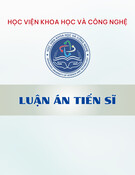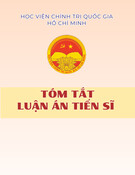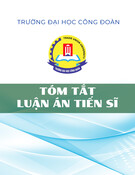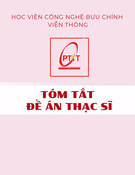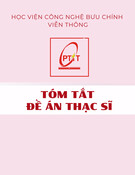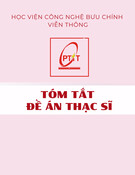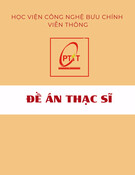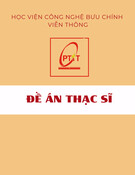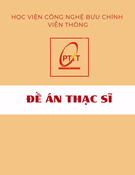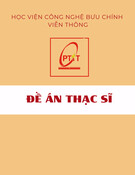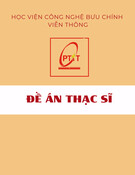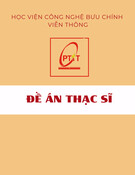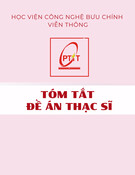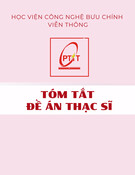
MINISTRY OF EDUCATION
AND TRAINING
VIETNAM ACADEMY OF SCIENCE
AND TECHNOLOGY
GRADUATE UNIVERSITY OF SCIENCES AND TECHNOLOGY
-----------------------------
TRAN HUU LONG
STUDY AND RECOMMENDATIONS ON SPATIAL
ORIENTATION PRIORITY SOLUTIONS FOR INTEGRATED
HAI PHONG COASTAL NATURAL RESOURCES
MANAGEMENT
Major: Natural Resources and Environment Geography
Code: 9440220
SUMMARY OF DOCTORAL THESIS IN GEOGRAPHY
HANOI - 2020

This work is completed at:
Graduate University of Sciences and Technology – Vietnam Academy
of Science and Technology.
Scientific instructor 1: Assoc. Prof. Dr. Lai Vinh Cam
Scientific instructor 2: Assoc. Prof. Dr. Nguyen An Thinh
Reviewer 1: …
Reviewer 2: …
Reviewer 3: ….
The thesis will be presented in front of the Graduate University’s doctoral
thesis evaluation council, meeting at the Graduate University of Sciences
and Technology – Vietnam Academy of Science and Technology at
…………, dated ………….., 2020.
The thesis is available at:
- Library of the Graduate University of Sciences and
Technology
- The National Library of Vietnam

1
PREAMBLE
1. Urgency of the thesis
The coast is the place where the human beings’ activities remain the
most active. The Vietnam coast has so far played the big part in our
economic development, and is the gateway to the sea for international
exchanges. A integrated coastal natural resource management spatial
orientation (IMSO) based on functional zoning (FZ) is considered as an
effective tool which shows specific actions of the Marine Spatial Planning
(MSP), and also an effective tool applied by various countries for their
Integrated natural resource management (INRM), unifying specialized
planning on the same territory, managing and settling conflicts, ensuring
benefits of stakeholders in using coastal natural resources, towards
sustainable development.
Based on the shortcomings in the Hai Phong coastal natural resource
management space, I decided to do my doctoral thesis in Geography, major
in Natural Resources and Environment Geography in “Study and
recommendations on spatial orientation priority solutions for integrated
Hai Phong coastal natural resources management”.
2. Thesis objectives
The thesis is to establish the scientific grounds for functional zoning
and recommend spatial orientation priority solutions for integrated Hai
Phong coastal natural resources management.
3. Main study of the thesis
- Determine the theoretical basis, logical framework, appropriate study
methods for the integrated Hai Phong coastal natural resource management
spatial orientation
- Identify and analyze natural and environment conditions, and local,
socio-economic activities that cause conflicts, trends of natural resource
change in Hai Phong coastal area according to development stages
- Recommend IMSO that should be associated with reasonable and
effective exploitation and use solutions for the sustainable development of
the Hai Phong coastal area.

2
4. Thesis theoretical point
Point 1: The Hai Phong coastal area is a space of strong interaction
between development activities and the natural dynamic impact of the river -
sea formation processes, causing spatial and natural - economic - social
functional differentiation, forming 9 functional zones in 5 integrated natural
resource management spaces.
Point 2: The strong socio-economic development has resulted in
conflicts and inadequacies in the use and exploitation of natural resources,
affecting the management space, requiring effective measures to reorganize
in the direction of synthesis and high feasibility.
5. Scientific and practical significance
a) Scientific significance
The thesis’s findings settle conflicts of integrated use and development
of integrated coastal natural resource management spatial orientation at
province/city level, contributing to rational management and use of the Hai
Phong coastal natural resources.
b) Practical significance
The integrated coastal natural resource management spatial orientation
will add a reasonable scientific basis for managers’ reference in their policy
making, adjusting planning, plan on the integrated Hai Phong coastal natural
resource management spatial orientation after 2020, with a vision to 2045.
CHAPTER 1. THEORETICAL BASIS AND METHODOLOGY
1.1. Overview of works related to the thesis
1.1.1. Foreign works
There are various marine spatial planning systems worldwide (including
coastal space). The original idea of the MSP came about 30 years ago, from
functional zoning at the Great Barrier Reef Marine Park in the Coral Sea,
Northeast Australia. Through it, people divided its marine space into
functional zones for effective management and use and adapting to the nature
of each zone.
From practical experience and good practices in countries, UNESCO,
in November 2006, organized the first International Conference on the
Marine Spatial Planning. The world has, since then, witnessed an
“explosion” of interest in MPA as a feasible way to manage the sea in

3
space, to settle conflicts and increase compatibility in exploitation, use of
marine resources and environment in the context of increasing pressure on
coastal areas and seas.
Belgium has conducted its MSP to exploit the coastal wind energy and
also protect and conserve ecological and biological values of the region at the
request of the European Union with development areas being divided into:
offshore “wind power area”, plan sustainable sand/gravel exploitation sites,
map habitats, protect biodiversity values, and manage land-based activities
which affect the marine environment.
1.1.2. Domestic works
The Vietnam Coastal area is the place where most of the major cities
are located and which play an important role in the overall development of
the country. It is also considered as a driving force for economic
development, capable of developing various industries (tourism, ports,
fisheries, etc.) and attracting investment in the effective socio-economic
development strategies, creating widespread influence to support
development of inland areas (midland and mountainous areas).
The MSP will, therefore, allocate space as scheduled for human
activities in the planned area to achieve short and long-term economic and
social goals.
The integrated Ha Long Bay coastal management project in 2002
carried out by cooperation between Vietnam – USA – IUCM prepared the
Halong Bay Use Functional Zoning map at a ratio of 1:25,000 which is
feasible and consistent with the practice of multi-industrial development of
this coastal area.
JICA (1998) divided the use functional zones in Quang Ninh Coastal
area into 04 major environment areas, consisting of: Special conservation
area, Active management area, Development area.
Within the framework of the project of using counterpart capital in
cooperation with NOAA (USA) during 2011-2013, led by the Ministry of
Natural Resources and Environment (Vietnam Administration of Seas and
Islands) and managed by the Ministry of Science and technology; the
Integrated Quang Ninh - Hai Phong Coastal Management until 2020, one of
the priority activities is to conduct “Use Zoning and make plan on Quang





